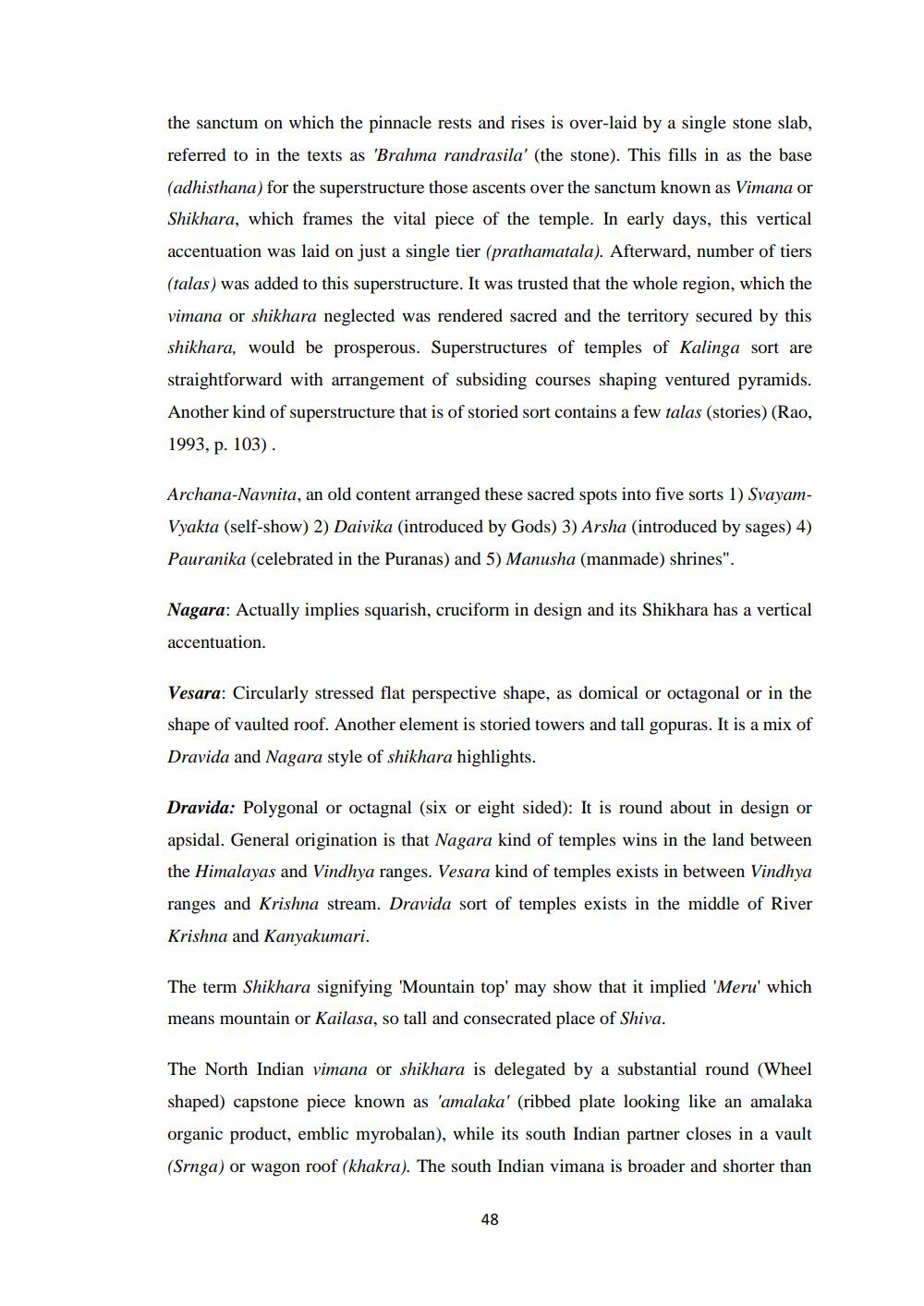________________
the sanctum on which the pinnacle rests and rises is over-laid by a single stone slab, referred to in the texts as 'Brahma randrasila' (the stone). This fills in as the base (adhisthana) for the superstructure those ascents over the sanctum known as Vimana or Shikhara, which frames the vital piece of the temple. In early days, this vertical accentuation was laid on just a single tier (prathamatala). Afterward, number of tiers (talas) was added to this superstructure. It was trusted that the whole region, which the vimana or shikhara neglected was rendered sacred and the territory secured by this shikhara, would be prosperous. Superstructures of temples of Kalinga sort are straightforward with arrangement of subsiding courses shaping ventured pyramids. Another kind of superstructure that is of storied sort contains a few talas (stories) (Rao, 1993, p. 103).
Archana-Navnita, an old content arranged these sacred spots into five sorts 1) SvayamVyakta (self-show) 2) Daivika (introduced by Gods) 3) Arsha (introduced by sages) 4) Pauranika (celebrated in the Puranas) and 5) Manusha (manmade) shrines".
Nagara: Actually implies squarish, cruciform in design and its Shikhara has a vertical accentuation.
Vesara: Circularly stressed flat perspective shape, as domical or octagonal or in the shape of vaulted roof. Another element is storied towers and tall gopuras. It is a mix of Dravida and Nagara style of shikhara highlights.
Dravida: Polygonal or octagnal (six or eight sided): It is round about in design or apsidal. General origination is that Nagara kind of temples wins in the land between the Himalayas and Vindhya ranges. Vesara kind of temples exists in between Vindhya ranges and Krishna stream. Dravida sort of temples exists in the middle of River Krishna and Kanyakumari.
The term Shikhara signifying 'Mountain top' may show that it implied 'Meru' which means mountain or Kailasa, so tall and consecrated place of Shiva.
The North Indian vimana or shikhara is delegated by a substantial round (Wheel shaped) capstone piece known as 'amalaka' (ribbed plate looking like an amalaka organic product, emblic myrobalan), while its south Indian partner closes in a vault (Srnga) or wagon roof (khakra). The south Indian vimana is broader and shorter than
48




